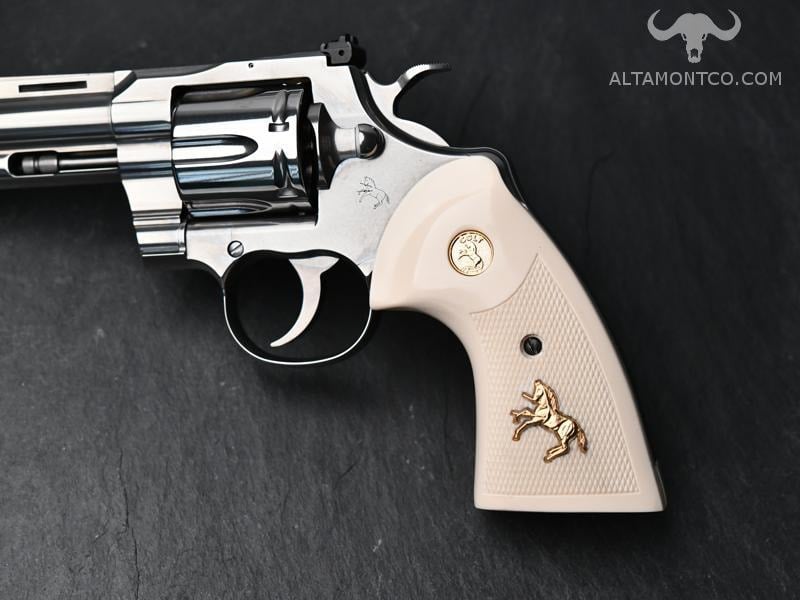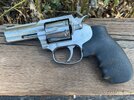westernrover
Member
- Joined
- May 4, 2018
- Messages
- 1,613
I'm considering acquiring a current model King Cobra or Python.
I understand these models have a transfer bar instead of Colt's Positive Safety hammer block. Do they still have a rebounding hammer also?
I don't believe Colt runs a forge anymore. Does Colt have a vendor forge the new revolver frames?
Are the barrels cold hammer forged? or is the rifling cut with a broach or button or formed with some other method like ECM? Are the short barrels on the King Cobra MIM like S&W Model 36?
Are the barrels choke bore? What's the twist rate and is it constant?
Are the barrels crush fit into the frame? I don't believe they're pinned or sleeved.
What are they doing on the barrel face and forcing cone? 5, 8, 11 degrees?
What about chamber throats?
Overall, are they setup for cast or jacketed or somewhere between?
How is the b/c gap? Are they pretty precise or sloppy?
Does Colt use MIM in their current revolvers or are the small parts wire EDM or made some other way? Didn't Colt use sintered metal in the Trooper Mark V and then went to a better method with the old King Cobra and Anaconda? What are they doing now?
Do they use the single folded leaf spring for the hammer and the rebound or are their two springs in the action? Is a one spring design why they can't have a more positive reset without increasing the trigger weight? Is this true for just the Python or the Cobras too?
I understand the side plate holds the hand in on the Python and the hand can slip off the ratchet if the side plate is loose. Does the Cobra/King Cobra have a similar design? Maybe they just didn't have any loose side plates?
Are the front sights installed with a roll pin or a spring-loaded quick-change scheme?
I'm sure I'll think of some more questions, but if I could understand the answers to these it would be a good start.
I understand these models have a transfer bar instead of Colt's Positive Safety hammer block. Do they still have a rebounding hammer also?
I don't believe Colt runs a forge anymore. Does Colt have a vendor forge the new revolver frames?
Are the barrels cold hammer forged? or is the rifling cut with a broach or button or formed with some other method like ECM? Are the short barrels on the King Cobra MIM like S&W Model 36?
Are the barrels choke bore? What's the twist rate and is it constant?
Are the barrels crush fit into the frame? I don't believe they're pinned or sleeved.
What are they doing on the barrel face and forcing cone? 5, 8, 11 degrees?
What about chamber throats?
Overall, are they setup for cast or jacketed or somewhere between?
How is the b/c gap? Are they pretty precise or sloppy?
Does Colt use MIM in their current revolvers or are the small parts wire EDM or made some other way? Didn't Colt use sintered metal in the Trooper Mark V and then went to a better method with the old King Cobra and Anaconda? What are they doing now?
Do they use the single folded leaf spring for the hammer and the rebound or are their two springs in the action? Is a one spring design why they can't have a more positive reset without increasing the trigger weight? Is this true for just the Python or the Cobras too?
I understand the side plate holds the hand in on the Python and the hand can slip off the ratchet if the side plate is loose. Does the Cobra/King Cobra have a similar design? Maybe they just didn't have any loose side plates?
Are the front sights installed with a roll pin or a spring-loaded quick-change scheme?
I'm sure I'll think of some more questions, but if I could understand the answers to these it would be a good start.



